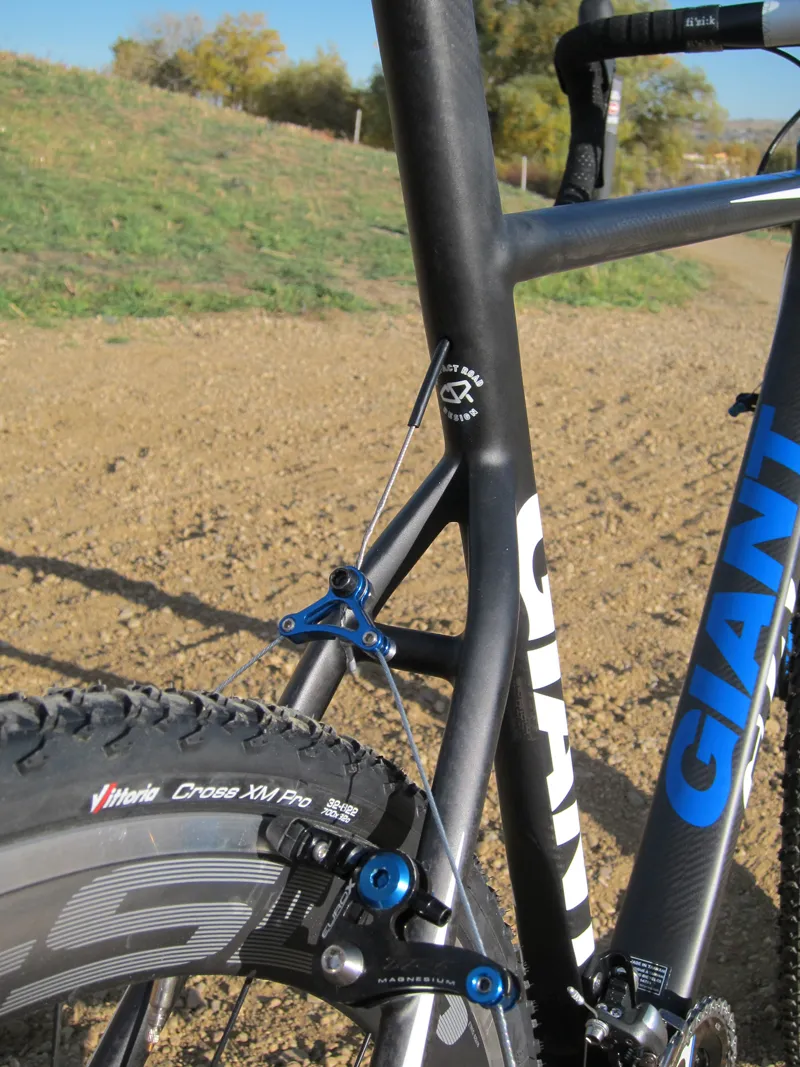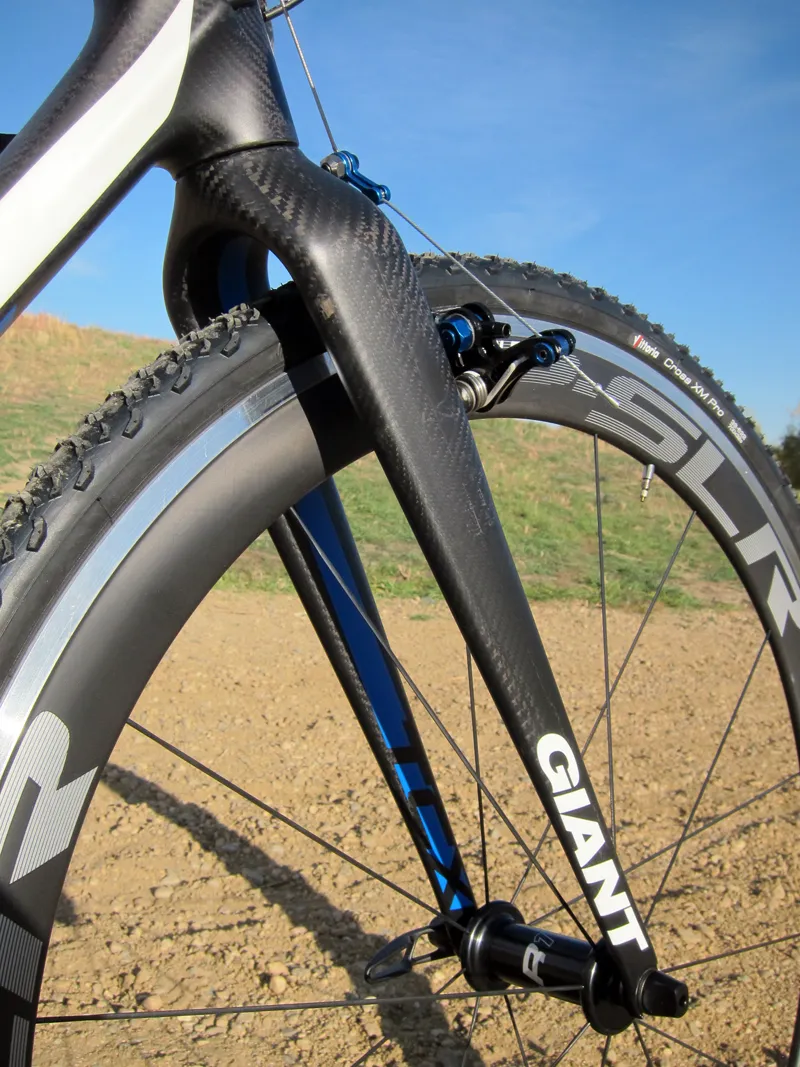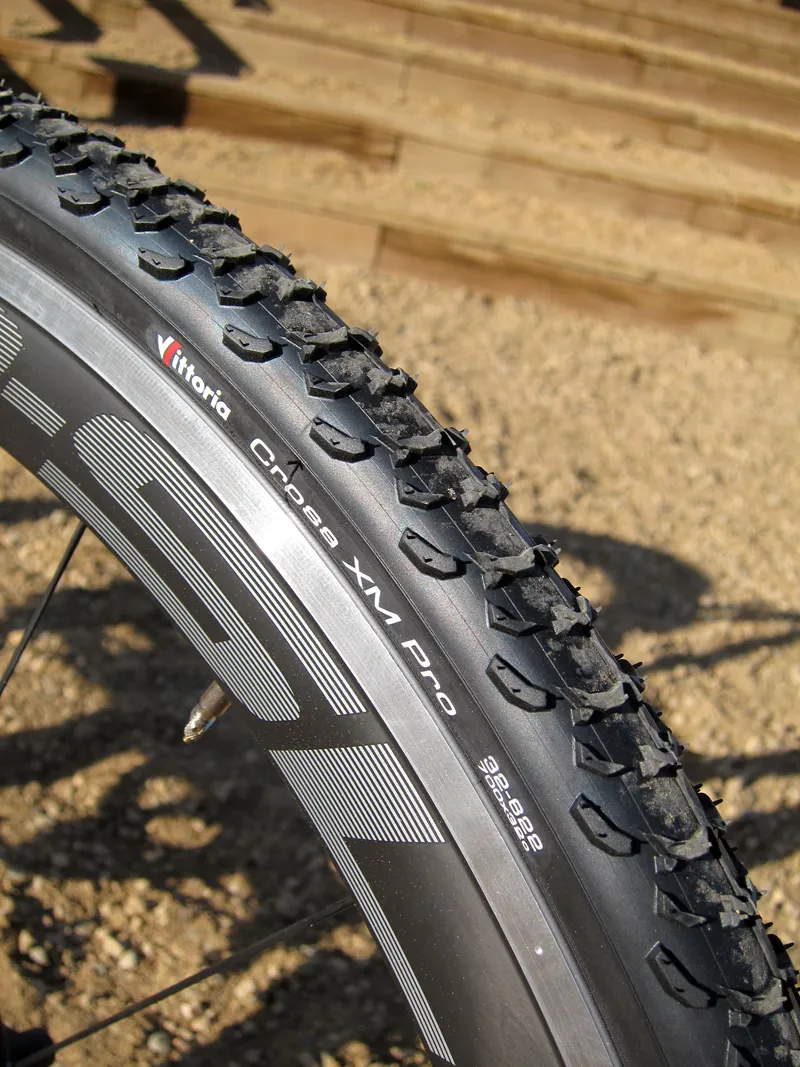Arriving on the BikeRadar office doorstep just as the heart of the cyclo-cross season is getting underway is Giant's TCX Advanced SL flagship, which is being raced on the World Cup circuit by Katie Compton, Bart Aernouts and Gerben de Knegt.
The TCX Advanced SL shares much of its design DNA with the road-going TCR Advanced SL, with features such as a tapered front end, rectangular-section MegaDrive down tube, extra-wide PowerCore bottom bracket with press-fit bearing cups, and integrated seatmast. Giant have made a number of adjustments to make the TCX Advanced SL more suitable for its chosen discipline, however.
Ride quality is high on the list of priorities here, with the TCX's shallower seatmast cross-section, offset seat cluster, slim seatstays, much flatter top tube and generally smaller-profile tubes throughout all intended to provide a smoother feel on rough courses. The tapered front end is also downsized from the TCR (1-1/8 to 1-1/4in instead of 1-1/4 to 1-1/2in).
Frame geometry is naturally 'cross-specific, too, with slightly longer chainstays, a shallower head tube angle and a dead-level top tube that's more appropriately situated for barriers and run-ups. And in case there was any doubt that Giant aim this bike solely at racing, there are no provisions for water bottles – it's only an hour so toughen up, buttercup.
Mud clearance looks superb on our tester, with widely set fork legs, bridgeless chainstays, a scalloped seat tube and extensive shaping of the bottom bracket area. There's no shelf on which mud can collect, the stays are pushed out wide on the bottom bracket shell, and even the front derailleur cable makes only a brief appearance on its way to the cable clamp. In fact, there's at least a finger's worth of room all around when using UCI-legal rubber.

Mud clearance down by the bottom bracket looks exceptionally good, with lots of room around the tire and no shelf on which crud can accumulate
Other 'cross-minded details include fully internal routing through the main triangle, with a particularly trick rear brake cable layout. This cleverly passes through the top tube and then exits right at the back of the seat tube for the cleanest possible path when used with traditional cantilevers.
Giant equip their top-shelf 'cross bike with a high-end but sensible mix of components that includes a Shimano Dura-Ace mechanical transmission, an FSA K-Force Light carbon crank with 36/46T chainrings, TRP's lightweight (but only marginally powerful) EuroX Magnesium cantilevers, Vittoria Cross XM clincher tires and a Fi'zi:k Antares K:ium saddle.
The rest of the spec sheet is filled with Giant's house-brand alloy bar and stem, and also their new P-SLR1 Aero wheels, which in this case are tapped more for their ability to slice through mud and sand than cheat the wind. Seasoned 'cross racers will likely be disappointed that a bike of this caliber comes with clinchers rather than tubulars, though.
Bare frame weight is an impressive 1,193g (small-sized frame w/ uncut mast and rear derailleur hanger) plus another 450g for the matching carbon fork, and the complete weight as pictured is a competition-ready 7.30kg (16.09lb, without pedals). Replacing the stock wheels with some lightweight carbon clinchers will net you a seriously light machine, but be careful with the budget as the stock bike is already US$6,900 as is.

The rear brake cable is routed through the top tube and exits right at the back of the seat tube for a smooth and direct path




